The Hudsgon River School Artists Focused Their Art on Landscapes From What State?
The Hudson River Schoolhouse was a uniquely American art motility – the first to develop after the country gained its independence in 1776. It was a painting style that celebrated the American mural. During the mid-19th century, dozens of artists painted scenes throughout the United States and beyond.
The Hudson River School is named afterwards a river that runs through New York land. Many participating artists lived and worked in the Hudson River Valley and the surrounding northeastern states. Withal, some painted every bit far from the Hudson River Valley equally the American West, S America, the Chill, and Europe.
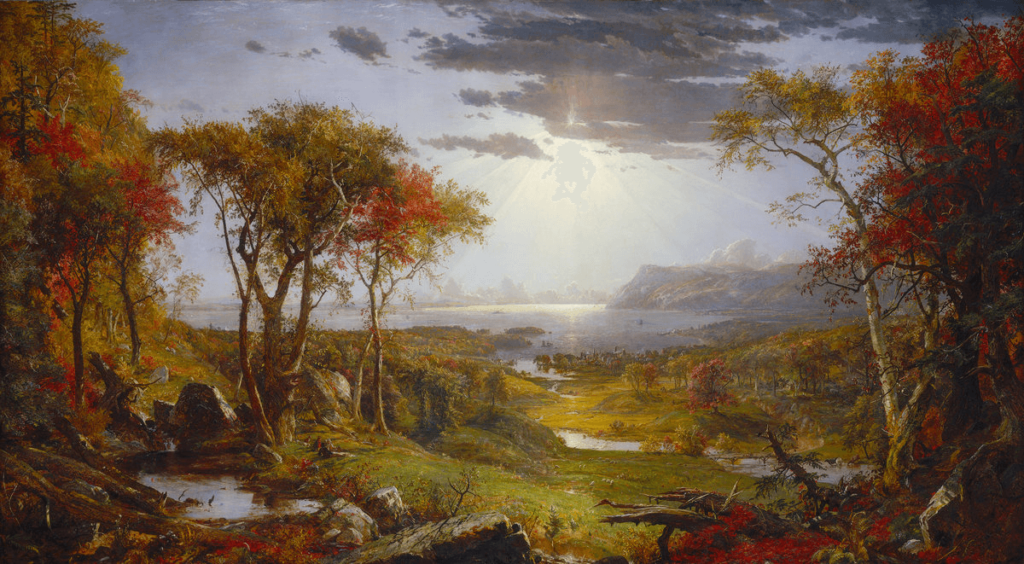
Landscape painting already had a long history in Europe, but this American version was slightly different. This was considering the American landscape, unlike the European landscape, was largely unaffected by humans at this time. Native Americans, who had already lived here for centuries, seem to have treated the country much more gently than the Europeans did.
The Romantic painting movement, which was in full swing in 19th-century Europe, emphasized the emotional affect of the ruins that dotted the European landscape, also equally the historical and literary associations of the land. Due north America had none of that. What information technology had instead was vast areas of pure, spectacular nature. Different in Europe, the country had not been exploited for large-scale man and industrial needs – notwithstanding.
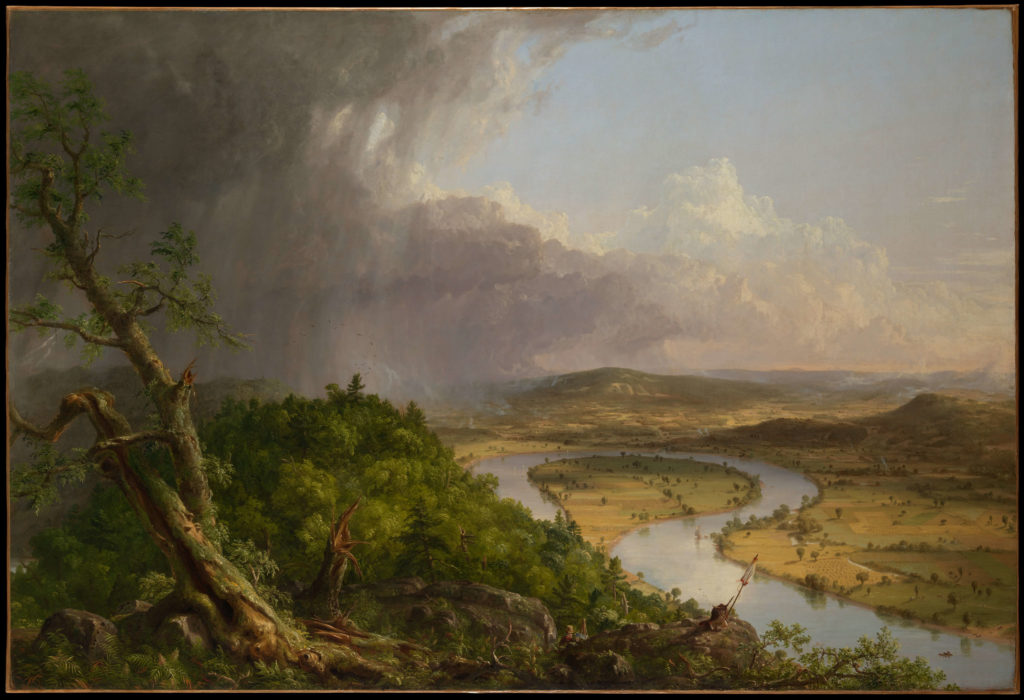
The unspoiled landscape was a signal of American pride, just it still wasn't prophylactic as the young nation became industrialized. Forests were cleared for timber and farmland, cities sprang up, miles of railroad tracks were laid down, and smoke from industrial chimneys started to appear on the horizon. The views shown in Hudson River School painting were already starting to disappear as the artistic movement gained hold.
Thomas Cole (1801-1848), the British-built-in creative person who founded the movement, was troubled by this trend. He lamented the destruction in his 1836 Essay on American Scenery. Many people consider Cole to have been an early environmentalist. A deeply spiritual human being who saw God'south manus everywhere in nature, Cole painted many allegorical and imagined landscapes likewise every bit views of Europe and the northeastern United States.
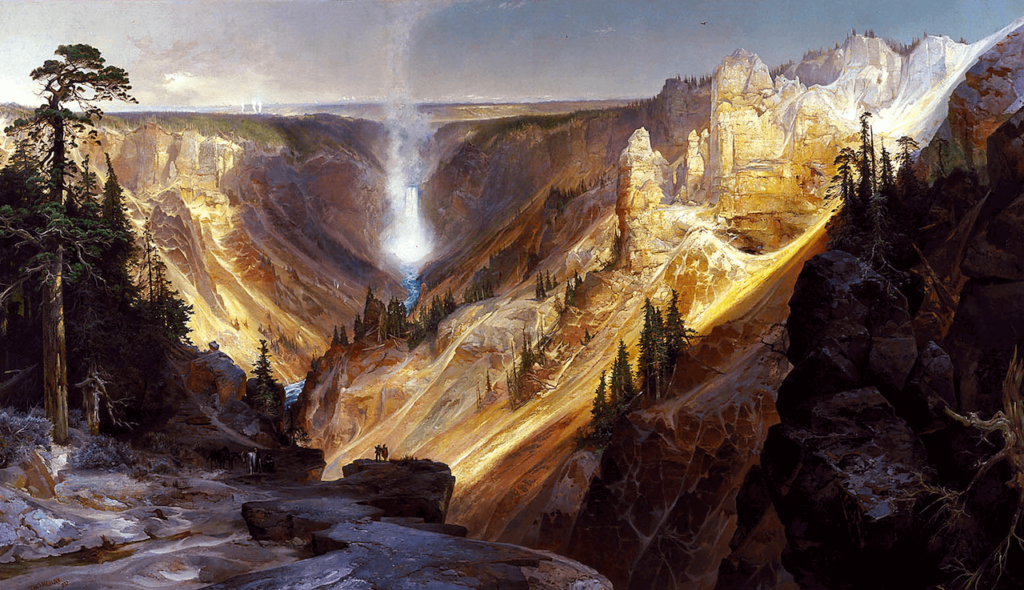
Some artists also ventured out to western states like California, dorsum when they were wild frontier territories. Thomas Moran (1837-1926) and Albert Bierstadt (1830-1902), in particular painted spectacular west-coast sites like Yosemite and Yellowstone. They publicized the area'due south awe-inspiring beauty, giving easterners a taste of what lay to the west. Their works besides helped garner support for the National Parks Act in the latter part of the 19th century.
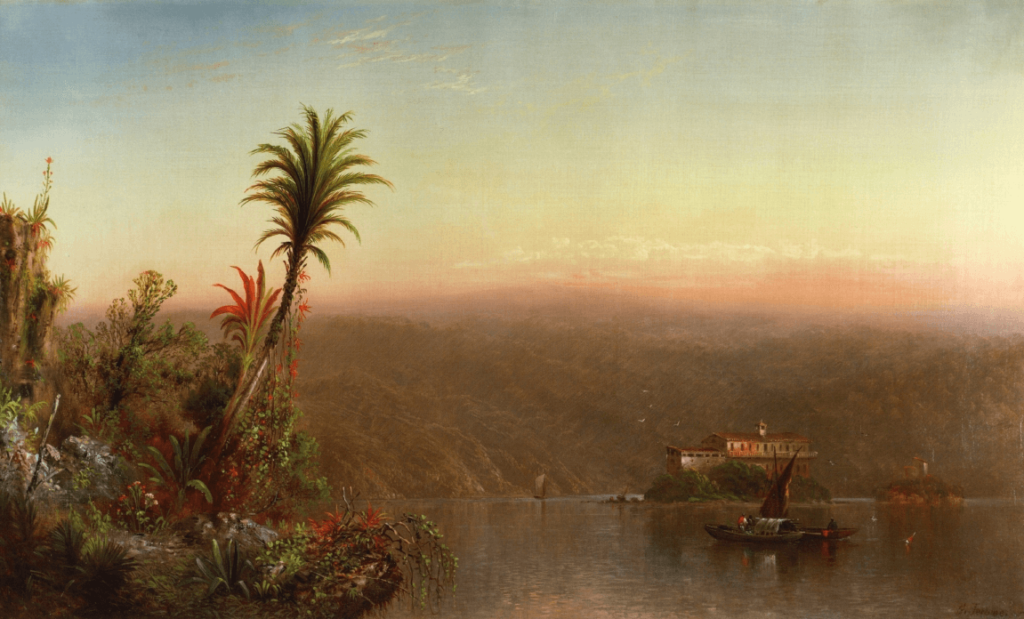
Not all Hudson River Schoolhouse artists limited themselves to landscapes within their national borders. Frederic Edwin Church (1826-1900) traveled to places such as the Middle East, S America, the Tropics, and the Chill to paint some of the world's most spectacular landscapes. Church was Cole's student, and he was probably the nigh successful of all the Hudson River School painters. His behemothic works were rich in natural particular. He displayed his grandest canvases, includingNiagara Falls andThe Centre of the Andes, in unmarried-painting shows in New York Metropolis and elsewhere. People lined upward down the street to encounter his paintings for a pocket-size fee. In this way, Church was responsible for America's beginning blockbusters.
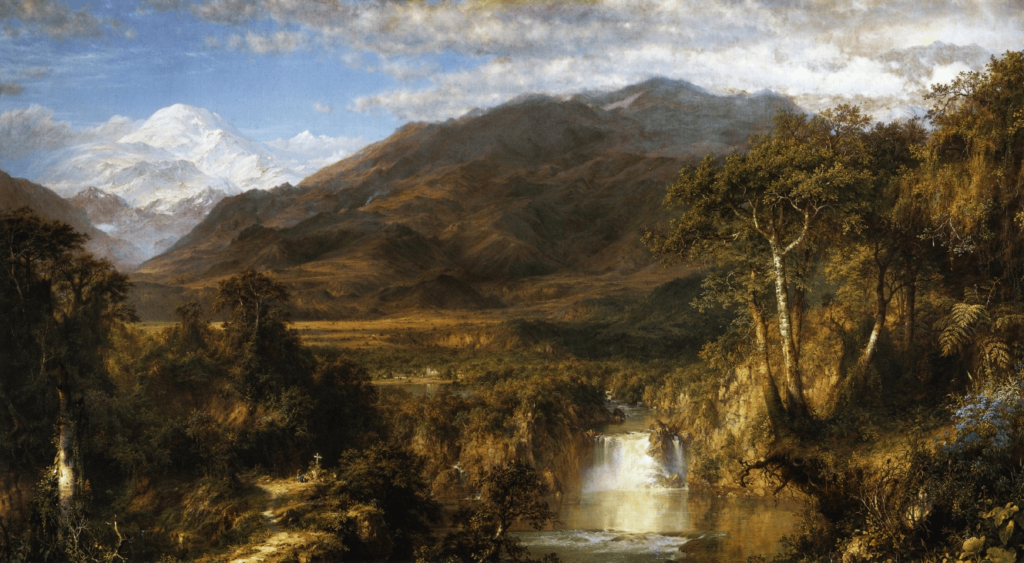
In addition to the well-known artists mentioned above, dozens more than – including several women – participated in this movement. Each artist had their own style or point of view. For example, Jasper Cropsey (1823-1900) became known as "The Painter of Autumn" for his scenes of brightly-colored autumnal foliage, while a slightly later generation of painters, called Luminists, focused on furnishings of lite and often favored marine scenes.
Hudson River Schoolhouse paintings are quite plentiful. You can come across them in most American museums, and they're often the subject of special exhibitions. Unfortunately, they're rarely shown in any great number exterior the United States, with the exception of a 2018 Thomas Cole testify in his native England.
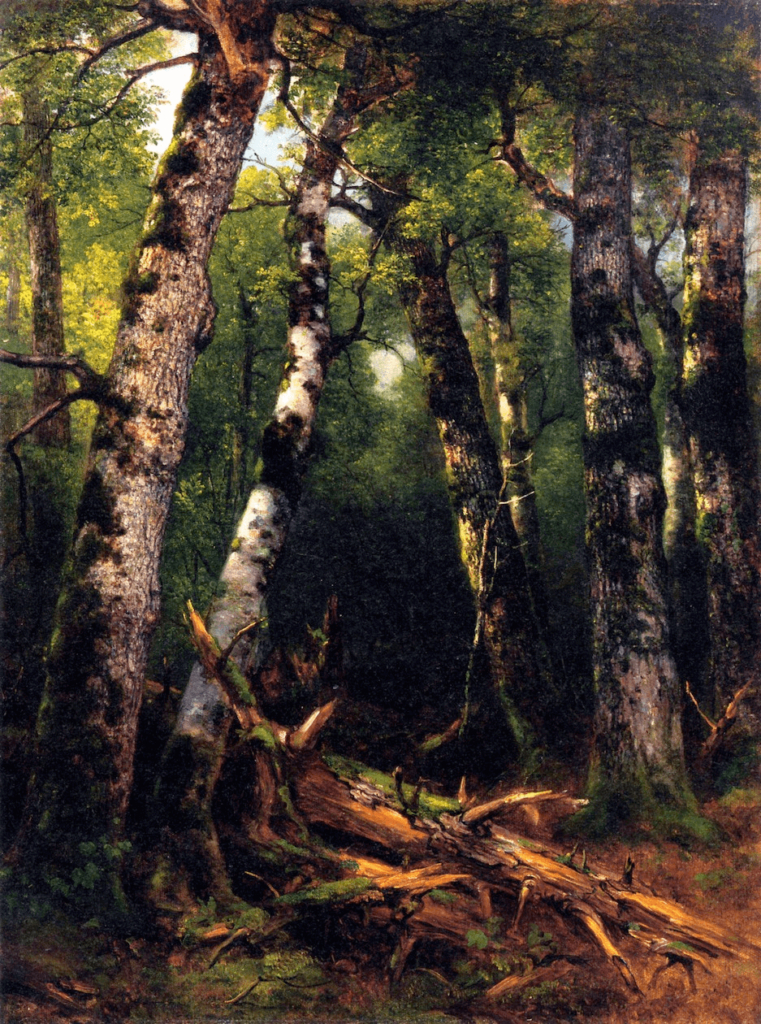
It's unfortunate that the Hudson River School isn't more than widely known outside its home country. I guess that's because people may feel that it's merely of involvement to Americans. While I feel a special connection to these paintings every bit someone from the American northeast, I believe that the Hudson River Schoolhouse tin can have universal appeal.
Not only is it a meaningful and beautiful add-on to the history of landscape painting, but it also shares the concerns of our day. Everywhere, people are spending more time worrying about human impact on the earth, talking well-nigh how to protect it, and debating the benefits of technological development over its costs to the natural earth. The Hudson River School engaged with these same bug more than a century ago, and so their work couldn't possibly be more relevant today.
Bibliography
2. Hudson River School collection of articles, A Scholarly Skater. Accessed iv May 2019.
4. Dr. Zygmont Bryan, "Thomas Cole, The Oxbow" in Smarthistory, 9 Aug 2015. Accessed four May 2019.
6. Olana, for Frederic Edwin Church building's cocky-designed home in Hudson, New York. Accessed 4 May 2019.
Source: https://www.dailyartmagazine.com/hudson-river-school/
0 Response to "The Hudsgon River School Artists Focused Their Art on Landscapes From What State?"
Post a Comment